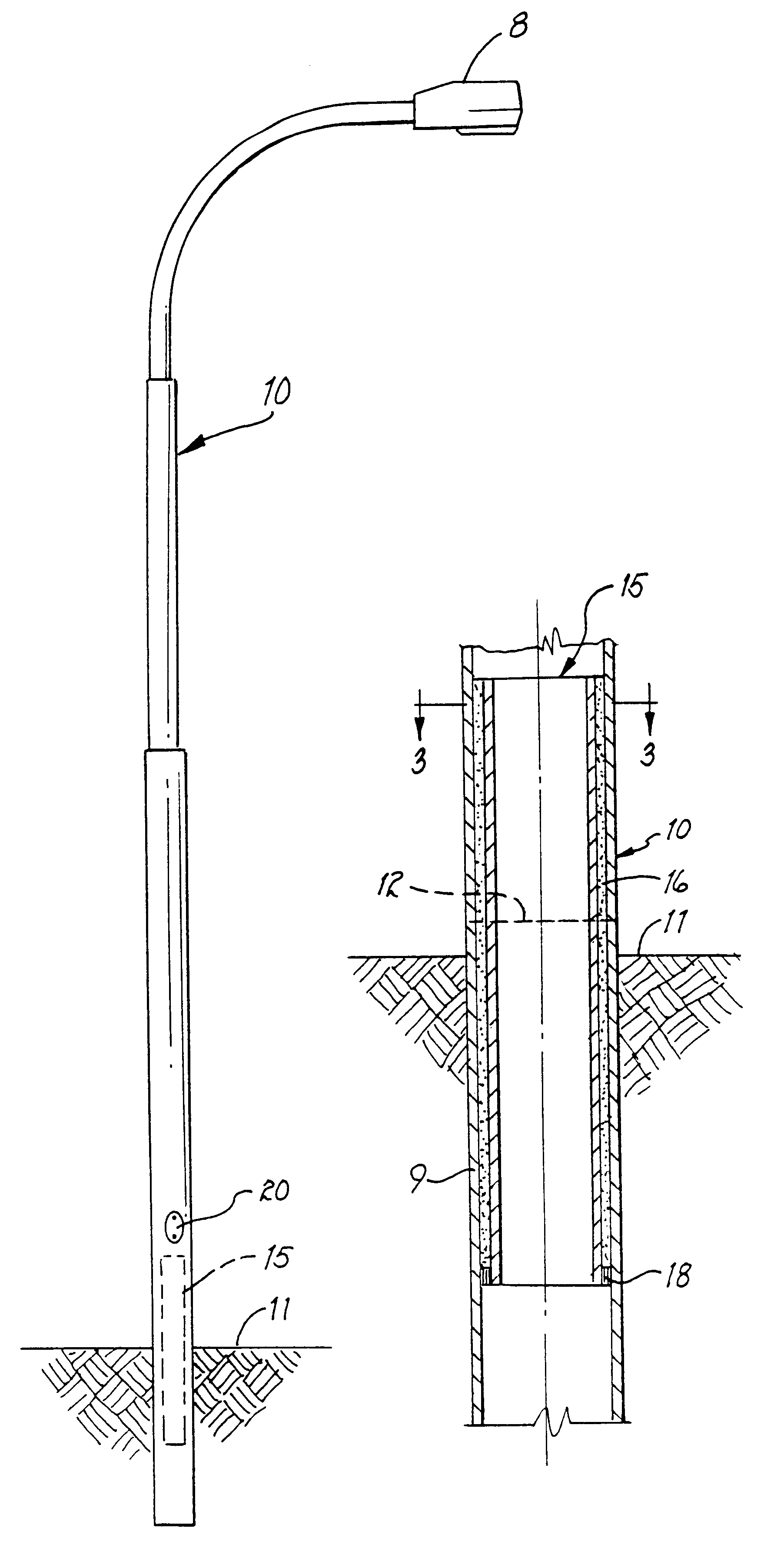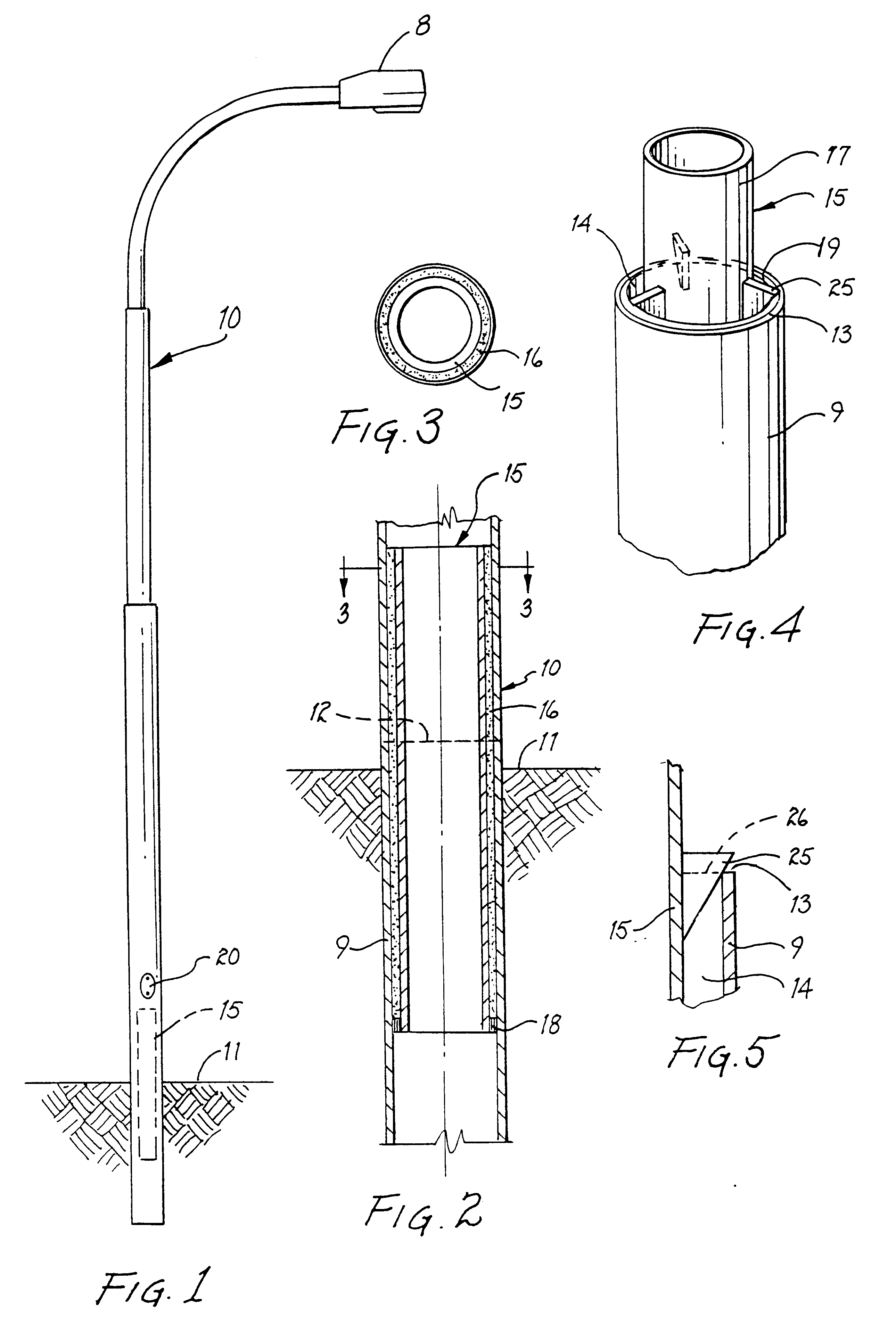Working poles and method of repair
a technology of working poles and working poles, which is applied in the direction of building components, building repairs, foundation engineering, etc., can solve the problems of metal corrosion, unsafe or inability to withstand wind loads, and high cost of replacement, so as to increase the resistance to corrosion
- Summary
- Abstract
- Description
- Claims
- Application Information
AI Technical Summary
Benefits of technology
Problems solved by technology
Method used
Image
Examples
Embodiment Construction
luminaire pole was repaired by entering the utility opening therein and unplugging the electrical wires extending upwardly through the luminaire pole to the top thereof. A band saw was then used to cut through the base of the pole approximately 2" above grade level. The top of the pole was then removed leaving the base of the pole extending upwardly from the ground. The pole was formed of steel pipe of a typical 5" nominal OD (5.563") conforming to a typical ASTM A53 specification found in older luminaire poles. The pole had an asphaltic paint on it, the pipe had a nominal 3 / 16" thickness. A sleeve was chosen having a 41 / 2" outside diameter and a wall thickness of 0.237". The chosen sleeve was cut to a length of 34 inches. A gasket formed of a foam rubber strip having an adhesive backing and being 11 / 4" wide and 1 / 8" thick was wound about the sleeve adjacent one end thereof until the thickness of the gasket formed thereby was slightly larger than the inside diameter of the base of t...
PUM
 Login to View More
Login to View More Abstract
Description
Claims
Application Information
 Login to View More
Login to View More - R&D
- Intellectual Property
- Life Sciences
- Materials
- Tech Scout
- Unparalleled Data Quality
- Higher Quality Content
- 60% Fewer Hallucinations
Browse by: Latest US Patents, China's latest patents, Technical Efficacy Thesaurus, Application Domain, Technology Topic, Popular Technical Reports.
© 2025 PatSnap. All rights reserved.Legal|Privacy policy|Modern Slavery Act Transparency Statement|Sitemap|About US| Contact US: help@patsnap.com


